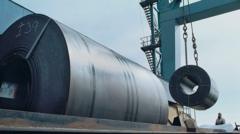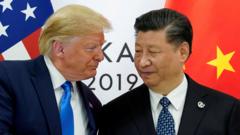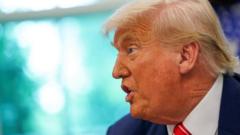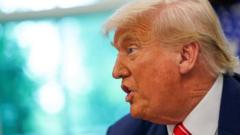The recent doubling of tariffs on steel and aluminum imports to 50% by President Trump has generated mixed responses, raising concerns over potential retaliatory measures from trade partners, industry disruptions, and economic repercussions within the U.S. While some sectors may benefit from heightened protections, many believe these tariffs will lead to increased costs and job losses in other industries.
Trump's Tariff Increase to 50%: Implications for the U.S. and Global Steel Markets

Trump's Tariff Increase to 50%: Implications for the U.S. and Global Steel Markets
President Trump's new tariffs on steel and aluminum imports, raised to 50%, could affect U.S. manufacturers and international trade relations, with varied reactions from industry leaders and foreign governments.
In a significant policy shift, President Donald Trump has implemented a new order that raises tariffs on steel and aluminum imports from 25% to 50%. This decision, which came into effect Wednesday, marks the second increase in tariffs since March and aims to bolster the American steel industry’s competitiveness. Critics, however, are warning of negative consequences, including retaliation by international trade partners and heightened costs for U.S. manufacturers and consumers reliant on these metals.
In a lamentable irony, many businesses affected by this decision were shocked to learn of the escalation, hoping it would merely serve as a bargaining tactic. Companies like Independent Can Co. expressed concerns about future investments due to escalating uncertainty, fearing that customers might pivot to alternative materials such as plastic. Operating amid what they describe as chaos, executives are weighing the potential damages resultant from such tariff hikes.
Notably, the United Kingdom was granted an exemption, maintaining its tariff levels at 25%, indicating ongoing negotiations with the United States. This has sparked discussions within the UK as the government seeks to finalize a trade deal that protects its steel sector from further tariffs. Wariness exists, however, as the introduction of a 50% tariff on steel imports could spell disaster for UK exports to the United States, with stakeholders already voicing fears of order cancellations.
Economists emphasize that while the tariffs may create a limited number of jobs in the steel sector, the broader economic implications could be grim— with estimates suggesting a net job loss of up to 75,000 in various industries dependent on steel and aluminum. The ripple effect is already being felt by manufacturing firms like Drill Rod & Tool Steels in Illinois, where costs have escalated dramatically alongside the newfound tariffs.
In the global landscape, U.S. alliances may also feel strain, with countries like Canada and those in the European Union primed to respond. Institutions like the European Commission are pushing for renewed negotiations to avert a trade war, aiming to rectify tariffs on American goods in response.
As stakeholders monitor developments closely, the question remains whether Trump's aggressive trade strategy will coalesce into a viable long-term plan or simply instigate further turmoil across the steel and manufacturing landscape.





















